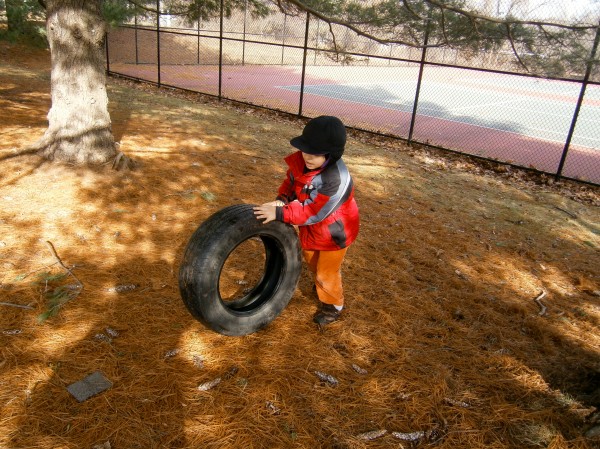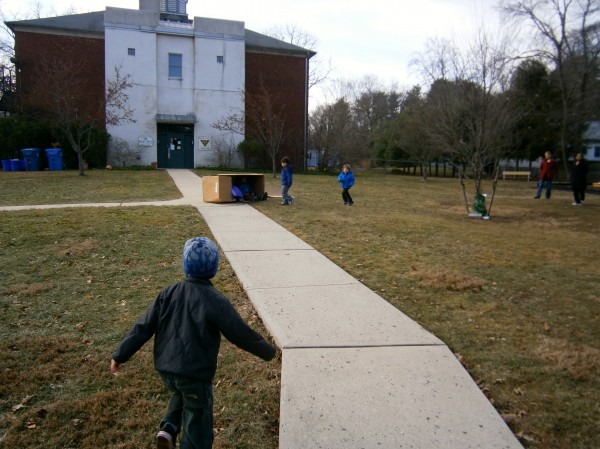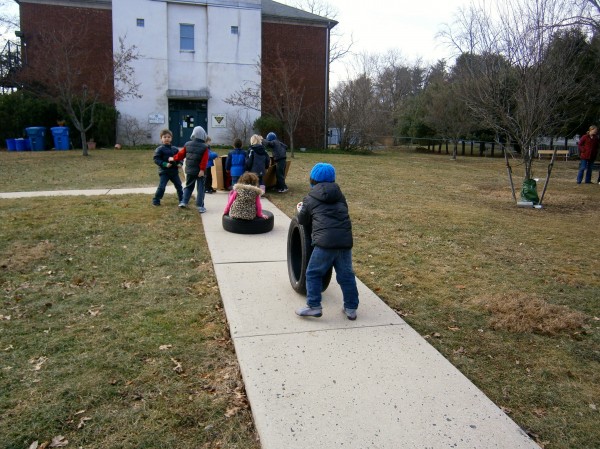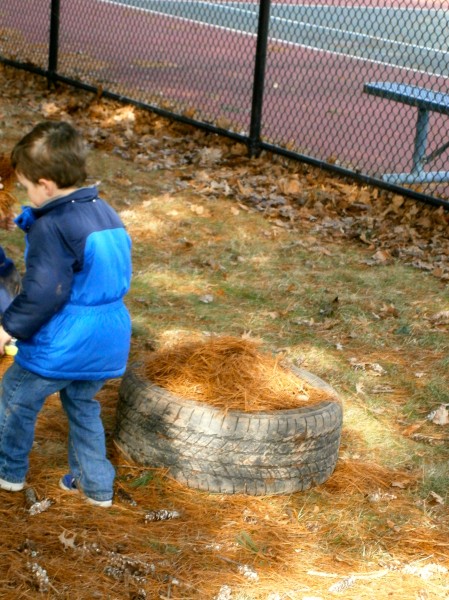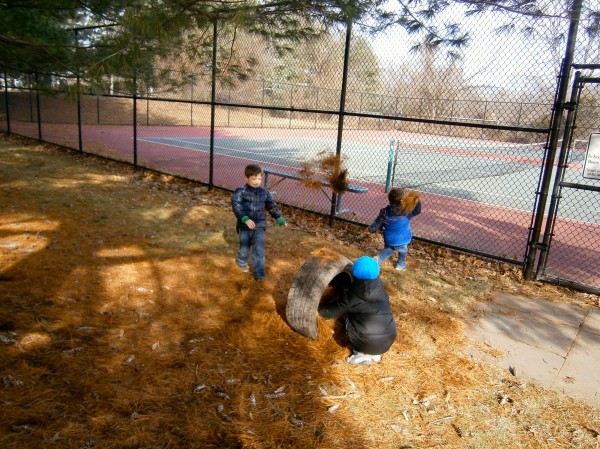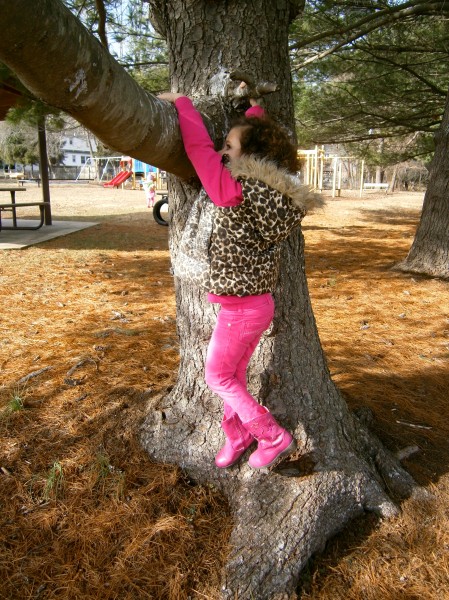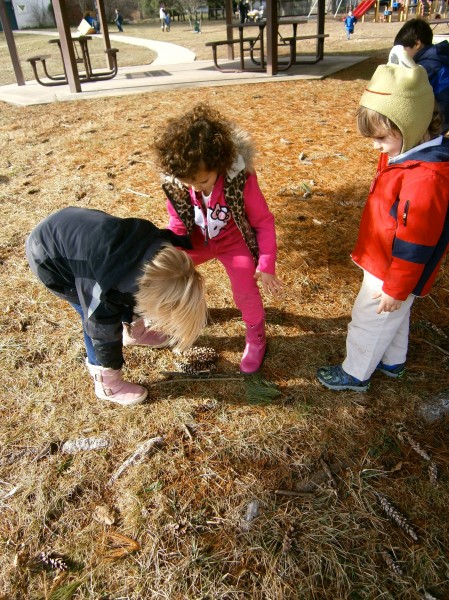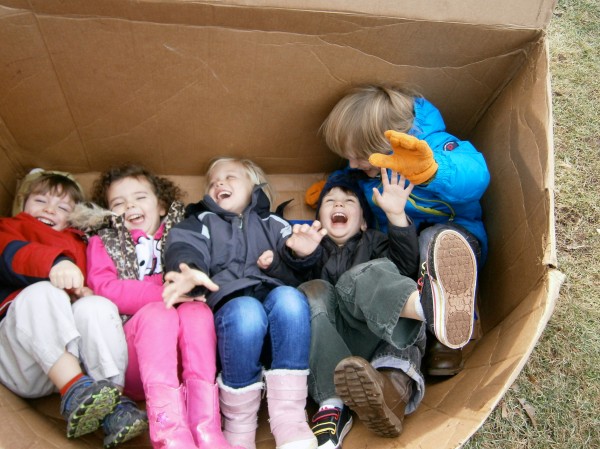Monday’s Outside Adventures
As I was working with the children this morning, I realized I’d made a major error in one of the captions on the previous post! I wrote, “Every child is working on fine motor skills, it’s not just play.”
I can’t believe I wrote that! I made it sound as though play was insignificant! I’ve just rewritten to say, “It’s never ‘just’ play.”
The quotations marks are essential. A teacher who knows and understands child development knows that a child does not learn they way an adult does. Their brains are still developing, and each separate body movement stimulates a different area. Running, spinning, jumping, crawling, touching, manipulating, etc. all ready the brain to receive and process new information.
I went to college in what I like to refer to as the “crunchy granola 70’s.” There was a huge emphasis on how movement affects the brain and learning. There were even some studies in the news where some executives were encouraged to crawl on the floor to retrain their brains, allowing communication between the right and left hemispheres!
I volunteered in the college preschool’s “Gross Motor Program.” We designed fun obstacle courses and activities for children to enhance intellectual and physical development. There was great excitement when one special needs child, who had been previously deemed “untestable,” was one day able to “suddenly” sit for an hour and focus on tasks at hand. What was the magic formula? A trampoline! The child was allowed (with an adult buddy) to jump on the trampoline for as long as he wished, until he was satisfied. His brain needed the movement in order to focus.
We have a very large playground at Rocky Hill Co-op. There are swings, a playscape, a sandbox, and lots of room to run. The children all go through the same stages learning to play together. The youngest ones start off running in circles yelling somewhat incomprehensibly. Children who have older siblings will teach the others how to take on roles. The older they get, the more they plan their play, and the more elaborate the play gets.
I try to provide open ended props for children to include in their play. Yesterday the weather was good and having a lot of time outside was a top priority. As I brought out some tires, one of our younger students saw them and yelled, “Look! Rolling things!”
If I were back in college, I’d be noting that this child is using a combination of “bi-lateral integration of the upper extremities” as well as “cross-integration of the upper and lower extremities.” Yes, that’s how we wrote back then. (Long hand, or on a typewriter… no PC’s way back then!) In simpler terms, he used both hands simultaneously to push the tire, then used alternating right and left hands to push the tire as he walked up the hill. This is a fabulous learning activity! His brain is processing just how much weight he needs to move the tire, how to keep it balanced, AND is making connections between the right and left hemispheres!
Here, the children are seeing the large box we’d brought out. Such excitement! Discussion, negotiation, compromise, brainstorming!
The children started to work out how to several children could use one tire. Filling a tire with pine needles was a lot of fun! (I won’t bore you with every learning objective here, but there were words like “more, not enough, higher, most and enough” bandied about! 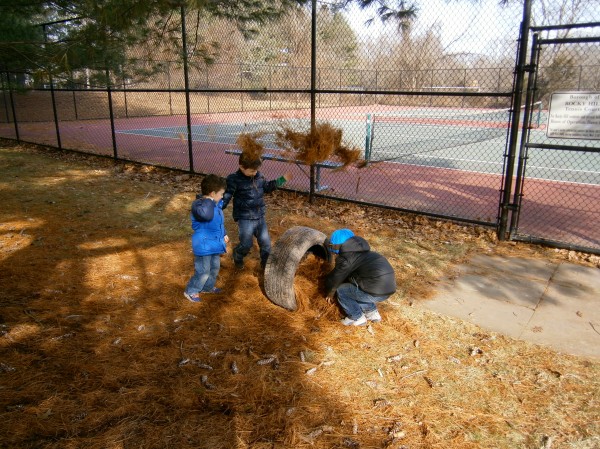
Meanwhile, as children wandered over to see the flying mulch, a discovery was made!
“Hey everybody, look what I found!” This child discovered a natural “step” in the trunk of the tree, and a small branch that was just the right height! (Motor planning! Oops, sorry, I won’t continue. Suffice it to say their brains were firing up!)
About four feet away, someone said, “Let’s make a campfire!” Pinecones, twigs and pine needles were gathered. 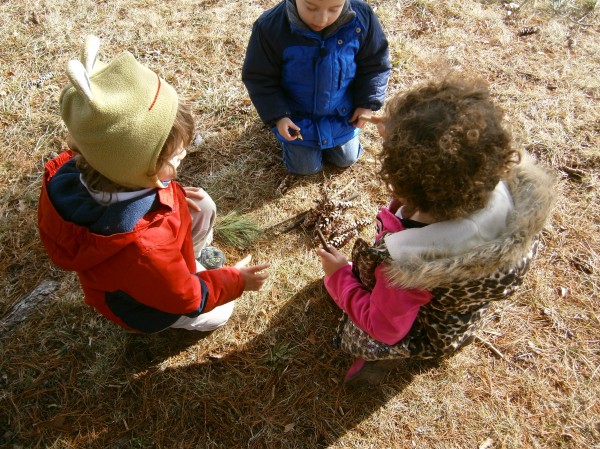
Here, they’re taking a quiet break, roasting marshmallows on their sticks, comparing how they like theirs cooked.
This last picture COULD be about balance, working together, kinesthesia, brain development, social-emotional skills, etc, etc. I think it’s about something bigger.
JOY!
Learning should be joyful, especially in preschool. It’s a “no-brainer.”
